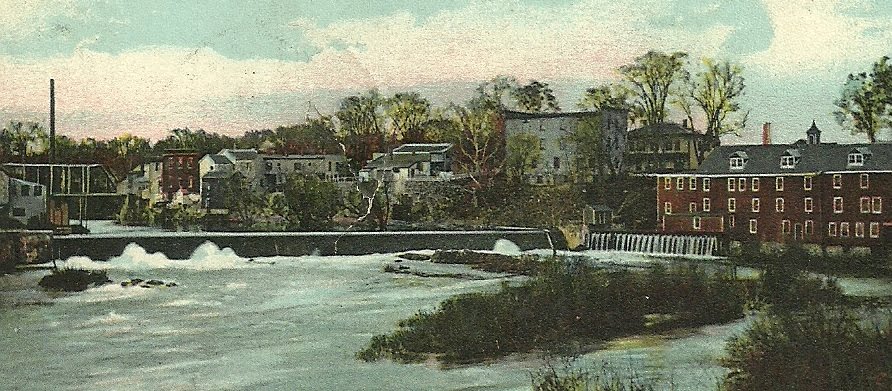In October of 1937 a union was formed at the Dunbarton in Greenwich. (The Paterson & Kearney, NJ & Anniston, AL plants were already unionized by this time.) A 10% wage increase was agreed upon in May 1938, but was revoked in February 1939 after the US & Great Britain signed a reciprocal trade agreement. This made imported linen thread cheaper, thus hurting the market for US produced thread & twine. Both NJ mills strike & shut production down.
 |
| Odd Fellows Hall in Greenwich where strike meetings were held |
After an unenthusiastic strike meeting the day before, only about 20 workers picketed the mill on February 13, 1939. Estimates have Greenwich strikers at 12. Nine days later only about 10 workers were striking. A February 25th meeting has workers severing ties with the Textile Workers Organization & forming an independent union. By mid-March all workers were back at the Greenwich mill. Workers at both NJ mills were still out on strike.
The NJ strike ended on April 19, 1939. Workers gained some ground with the wage reduction changed from 10% to 7%, essentially giving all workers a 3% raise from pre-May 1938 wages. Greenwich's independent union was recognized by the National Labor Relations Board (NRLB). 40-hour work week, time & a half on Saturday, one week vacation, & no pay reductions for one year were also approved. The Union hosted a party at the White Swan Hotel on October 14, 1939. Dinner was brought to the boiler room for Sam McCune, the only employee left on duty that night!
For more information:
*Ruddock, W. Linen Threads and Broom Twines: An Irish and American Album and Directory of the People of the Dunbarton Mill Greenwich, New York 1879-1952. Bowie, MD: Hertiage Books, 1997.
^ Reciprocal Trade Agreement: http://www.washingtontradereport.com/RTAAcanada.htm




